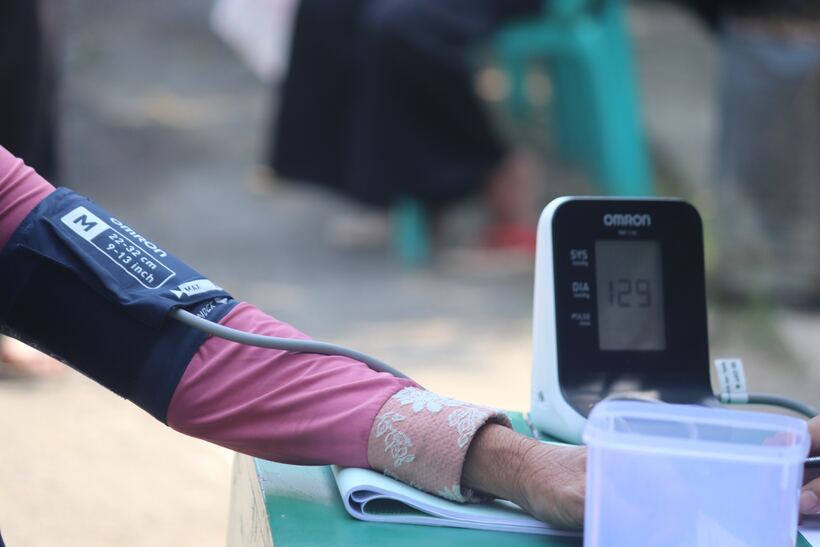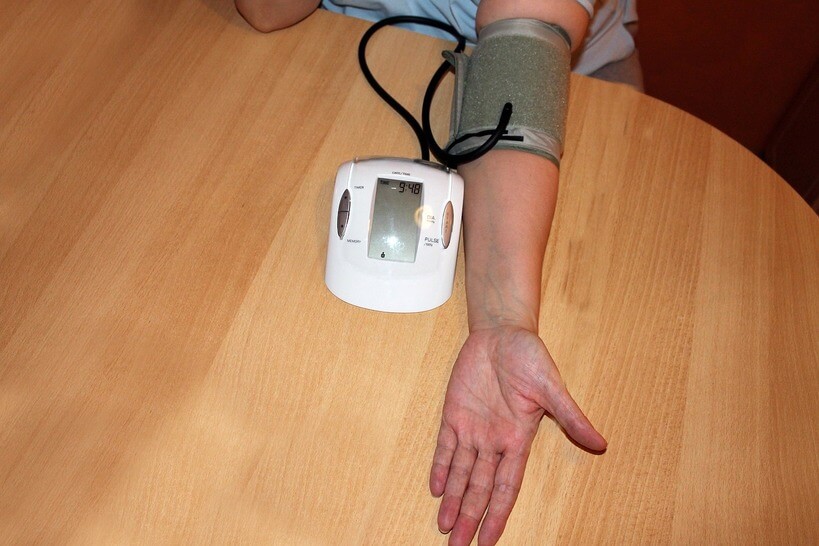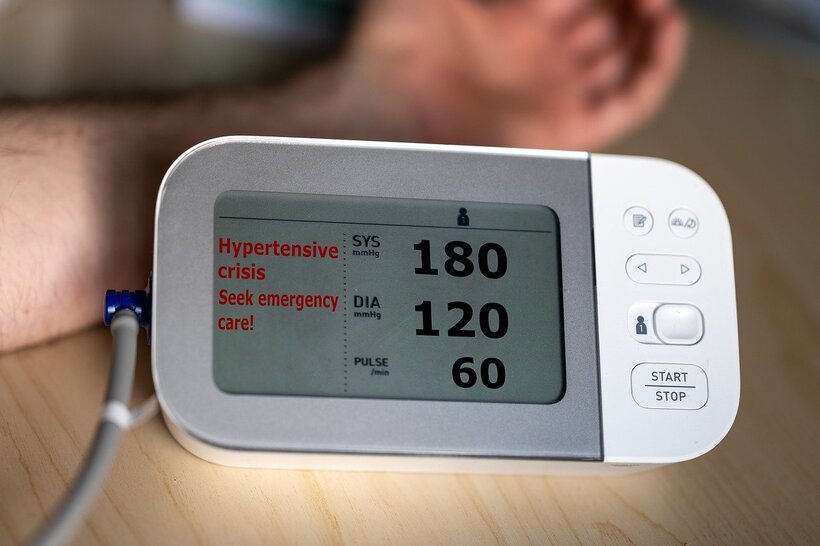Blood pressure readings can be key to your health and well-being. Monitoring your blood pressure at home with monitors can give accurate readings. These can help you and your doctor manage your condition effectively.
Take readings at different times, like morning before breakfast, and evening after dinner. You’ll get an understanding of your blood pressure patterns. Also, check how lifestyle choices, such as exercise and stress, affect your blood pressure. This way, you can take control of high blood pressure.
Whether you’re using an automatic cuff monitor or a manual one, follow the instructions for accurate measurements. It’s all about taking control of your health – don’t miss out! Start tracking your blood pressure today and pave the way for better cardiovascular health.
Table of Contents
When is the best time to take blood pressure readings?
To ensure accurate blood pressure readings, it’s important to consider the timing. Discover the differences between morning and evening readings, before and after exercise, and before and after meals. Each sub-section provides valuable insights for the surveillance of your blood pressure effectively.
Morning vs. evening readings
Comparing ‘morning vs. evening readings’ is essential for blood pressure tracking. Let’s use a table to illustrate the difference between the two time periods:
| Time Period | Readings |
|---|---|
| Morning | 129/80 mmHg |
| Evening | 137/82 mmHg |
Besides the table, individual variations need to be taken into account. Medication intake, physical activity, and stress levels can all affect your blood pressure during the day.
It is important to understand when is optimal time to measure blood pressure in order to get an accurate diagnosis and effective treatment.
Remember, if you want to check your blood pressure, don’t forget: before exercise, you’re pumped up, and after exercise, you’re just plain exhausted!
Before vs. after exercise
Exercising has a big effect on blood pressure readings. Here’s the scoop on tracking your blood pressure before and after.
- Before Exercise: Check your blood pressure before working out for a baseline reading. This will help you understand how your body reacts to exercise and identify any possible risks.
- During Exercise: Don’t take your blood pressure during exercise as it might not be accurate due to the increased heart rate and effort.
- After Exercise: Checking your blood pressure after exercising can show how well your body recovers. Measuring it after physical activity tests how quickly your heart goes back to its resting state.
- Considerations: Remember that factors such as fitness level, age, and overall health, will influence your blood pressure readings before and after exercise.
Also, remember that there are special details about blood pressure measurements before vs. after exercise that you need to know. Comprehending these details can help you track your cardiovascular health in different stages of physical activity.
To get the importance of tracking blood pressure, you need to make use of the opportunity to check for potential risks or improvements in cardiovascular health. By measuring often before and after exercise, you can have vital information to help you decide what’s best for your wellbeing. Don’t miss out on these insights – start taking charge of your cardiovascular health today!
Before vs. after meals
Blood pressure measurements vary depending on many factors, like if we take them before or after meals. Let’s take a look at a comparison table to spot patterns or changes.
| Before Meals | After Meals | |
|---|---|---|
| Systolic | 120 mmHg | 130 mmHg |
| Diastolic | 80 mmHg | 90 mmHg |
| Pulse rate | 70 bpm | 75 bpm |
The table shows a slight increase in both systolic and diastolic readings after meals. This could be due to the body digesting and absorbing nutrients. The pulse rate also rises a bit after eating.
Usually these variations are within an acceptable range. But, for those with medical issues or high blood pressure, it may be better to wait a bit after eating before measuring.
For precise and consistent measurements, wait at least 30 minutes after eating before taking readings. This lets the body resume its resting state and removes any temporary changes from food.
Importance of blood pressure monitoring
Monitoring your blood pressure regularly is vital for good health and avoiding heart problems.

High blood pressure is very common but usually doesn’t show any signs. It can be dangerous if left untreated, so regular tracking is key.
Accuracy is important when measuring blood pressure, so do it at the same time every day. Doing this helps establish a reliable baseline and track changes.
Many people prefer to monitor their blood pressure at home. It lets you check more often and share data with your doctor. But self-monitoring should not replace medical care.
To control your blood pressure, exercise regularly. This can help with heart health and overall wellbeing.
Understanding blood pressure readings? It’s like trying to crack Morse code from your arteries – but with higher stakes!
Understanding blood pressure readings
Let’s break down the important values that are typically measured in blood pressure readings. The two key numbers are systolic and diastolic pressure. Systolic pressure is the force on the walls of the arteries when the heart beats. Diastolic pressure is the force when the heart is at rest.
| Blood Pressure Category | Systolic Pressure (mmHg) | Diastolic Pressure (mmHg) |
|---|---|---|
| Normal | Below 120 | Below 80 |
| Elevated | 120-129 | Below 80 |
| Stage 1 Hypertension | 130-139 | 80-89 |
| Stage 2 Hypertension | 140 or higher | 90 or higher |
| Hypertensive Crisis | Higher than 180 | Higher than 120 |
These values contribute to overall blood pressure levels. Monitoring them helps people stay within a healthy range. A high reading may be an indicator of medical conditions such as hypertension, so it is advisable to visit a doctor for accurate diagnosis and treatment.
By tracking measurements regularly and seeking medical attention when needed, individuals can maintain healthy blood pressure levels. Plus, factors such as stress and cake consumption can affect reading.
Factors that affect blood pressure
Blood pressure is impacted by a number of factors. Knowing them can help us control our BP.
Salt intake: Eating too much salt can raise BP. We should limit our salt intake and pick healthier options.
Exercise: Engaging in regular physical activity makes the heart stronger and lowers BP. Incorporating workouts into your routine can help keep BP healthy.
Stress: Stress can cause temporary spikes in BP. Finding ways to manage stress, like meditation, can help keep BP low.
Alcohol: Too much alcohol can increase BP. Abstaining or drinking in moderation is advised for maintaining healthy BP.
Other factors: Medication, smoking, age, genetics, and underlying medical conditions like diabetes or kidney disease can also affect BP.
Take control:
- Eat a balanced, low-sodium diet full of nutrition.
- Exercise to improve cardiovascular health.
- Manage stress through breathing exercises or yoga.
- Limit alcohol consumption or abstain.
By following these tips, we can take proactive steps to control our BP and reduce the risk of cardiovascular diseases. Time your BP checks between meals, naps, and existential crises.
How to accurately measure blood pressure at home
To accurately measure your blood pressure at home, use a blood pressure monitors. Position yourself correctly and follow proper techniques for accurate measurements.

This includes the steps for using a blood pressure monitor and ensuring proper positioning. By mastering these techniques, you can effectively monitor your blood pressure in the comfort of your own home.
When managing your blood pressure, consider taking Mukta Vati at the best time to ensure its effectiveness and potential benefits.
Steps for using a blood pressure monitor
Home blood pressure monitoring can be a great way for accuracy. To get the most accurate reading, do this:
- Sit in a comfortable spot, feet flat and back supported.
- Wrap the cuff around your arm. Make sure it’s not too tight – one finger should fit between the cuff and your arm.
- Place the stethoscope/sensor over the brachial artery on your inner arm.
- Inflate the cuff until you can’t feel your pulse.
- Release the air slowly, listening for sounds or watching readings on digital monitors.
Proper positioning and techniques for accurate readings
For accurate readings at home, it’s essential to position yourself and use the right techniques. Here’s how:
- Sit comfortably with feet flat on the ground, and rest your arm on a table at heart level.
- Wrap the cuff above your elbow, snugly but not too tight.
- Align the artery marker over the brachial artery, inside your arm.
- Use a digital monitor to take multiple measurements, with a short break in between.
- Also, avoid caffeine, exercise, or smoking for 30 minutes prior.
The role of blood pressure monitoring in managing hypertension
To manage hypertension effectively, it is crucial to monitor your blood pressure regularly. Tracking your blood pressure offers several benefits, such as early detection of any fluctuations and personalized tracking of your health.

Additionally, using home monitoring can significantly assist in disease control, providing precise readings outside of the doctor’s office. Let’s explore the advantages of regular blood pressure monitoring and the role of home monitoring in managing hypertension.
Benefits of regular blood pressure monitoring
Regularly tracking blood pressure brings lots of advantages. It can detect any changes quickly, helping to avoid complications like heart disease and stroke.
- By tracking it, you can determine your overall health and make changes to keep your pressure healthy.
- It also helps healthcare professionals adjust medicine dosages and plans perfectly.
- As well, it gives healthcare providers info to tailor treatment plans.
- Plus, it encourages people to be active in controlling hypertension.
Moreover, it helps assess the impact of meds and any side effects.
For precise home tracking, use a calibrated device and follow the instructions given by your healthcare provider.
Tracking blood pressure is like having a personal detective that keeps track of it, so you can catch it before it causes trouble.
Using home monitoring to assist in disease control
Home monitoring holds a key role in managing hypertension. It enables individuals to check their blood pressure levels in their own homes. This supplies clinicians with valuable data to make informed decisions for disease control.
Benefits of Home Monitoring:
- Convenience: Patients can check their blood pressure without visiting a healthcare facility.
- Accuracy: Home monitoring devices provide precise and dependable measurements.
Furthermore, home monitoring boosts patient involvement and encourages them to take part in controlling their hypertension. It gives individuals a sense of responsibility for their health.
Home blood pressure tracking has a long history. It was introduced in the late 1970s and became popular due to its success in preventing cardiovascular events. Over time, many technological advancements have made these devices more precise and accessible, making them an indispensable part of hypertension management.
By utilizing home tracking as a tool for disease control, individuals become proactive participants in managing their hypertension. The convenience, accuracy, and empowerment it offers make a great contribution to attaining ideal health outcomes for patients with high blood pressure.
Even if your blood pressure ‘climbed’ while reading this article, remember that tracking it regularly is the ‘pressure’ that keeps hypertension in check!
Conclusion
Timing is key when it comes to tracking your blood pressure. Taking readings at different times can help you understand your health and how your body reacts to activities.
Our blood pressure changes naturally throughout the day. It’s usually lower in the morning and higher in the afternoon or evening. So, it’s best to take your measurements before breakfast or exercise. This will give you a good baseline.
Using a home blood pressure monitors is more precise than getting measurements at the doctor’s office. People can get anxious there, which can raise their blood pressure. So, testing at home is a better way to get reliable results.
According to American Heart Association, the morning hours are considered optimal for accurate measurements. It is recommended to take readings before eating or taking any medication to ensure more reliable results.
To make sure your measurements are precise, sit still for at least 5 minutes before taking your blood pressure. Sit up straight with both feet flat on the floor and put the cuff on your upper arm at heart level. Don’t talk or move during this process.
Frequently Asked Questions
What is the best time of day to take my blood pressure readings?
There is no universally agreed upon best time to take blood pressure readings as it can vary from person to person. However, for most individuals, the morning hours are considered ideal. It is recommended to take measurements before eating or taking any medication to get precise readings.
Can I monitor my blood pressure at home?
Yes, home blood pressure monitoring is becoming increasingly popular and is a great way to keep track of your readings.
How often should I check my blood pressure?
The frequency of checking your blood pressure depends on your individual circumstances. For most people with hypertension, it is recommended to monitor it at least once per day. However, your doctor may provide specific guidelines based on your medical history and condition.
Are readings taken at the doctor’s office more accurate?
Readings taken at the doctor’s office can sometimes be higher than those taken at home due to the phenomenon known as “white coat hypertension” – where people experience elevated blood pressure in a medical setting.
Is it important to measure blood pressure in both arms?
While measuring blood pressure in both arms is not necessary for everyone, it can provide valuable information for some individuals. Significant differences in readings between arms may indicate underlying health issues such as artery blockages. If you suspect such issues, consult your doctor to determine if measuring both arms is necessary for you.



